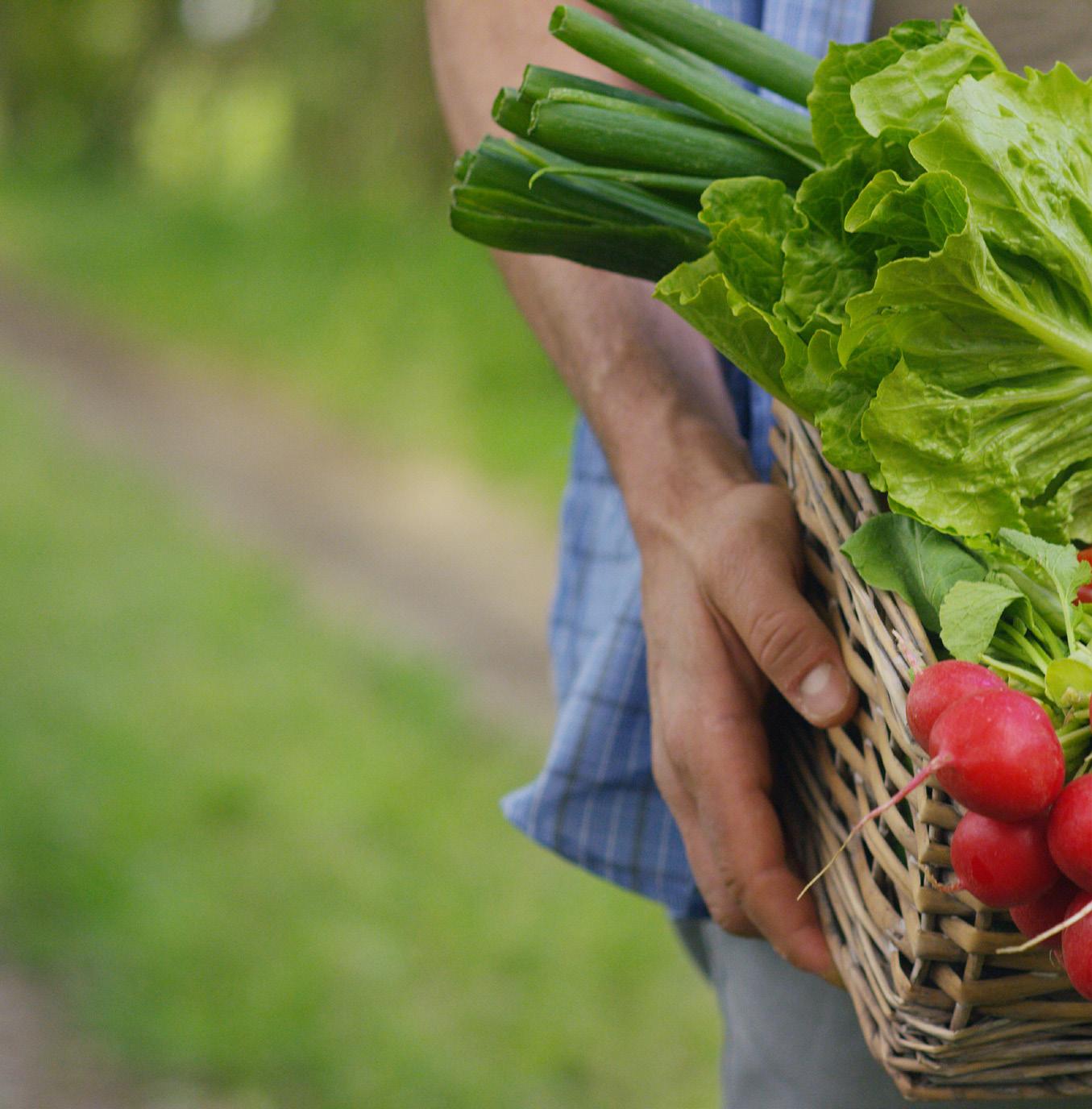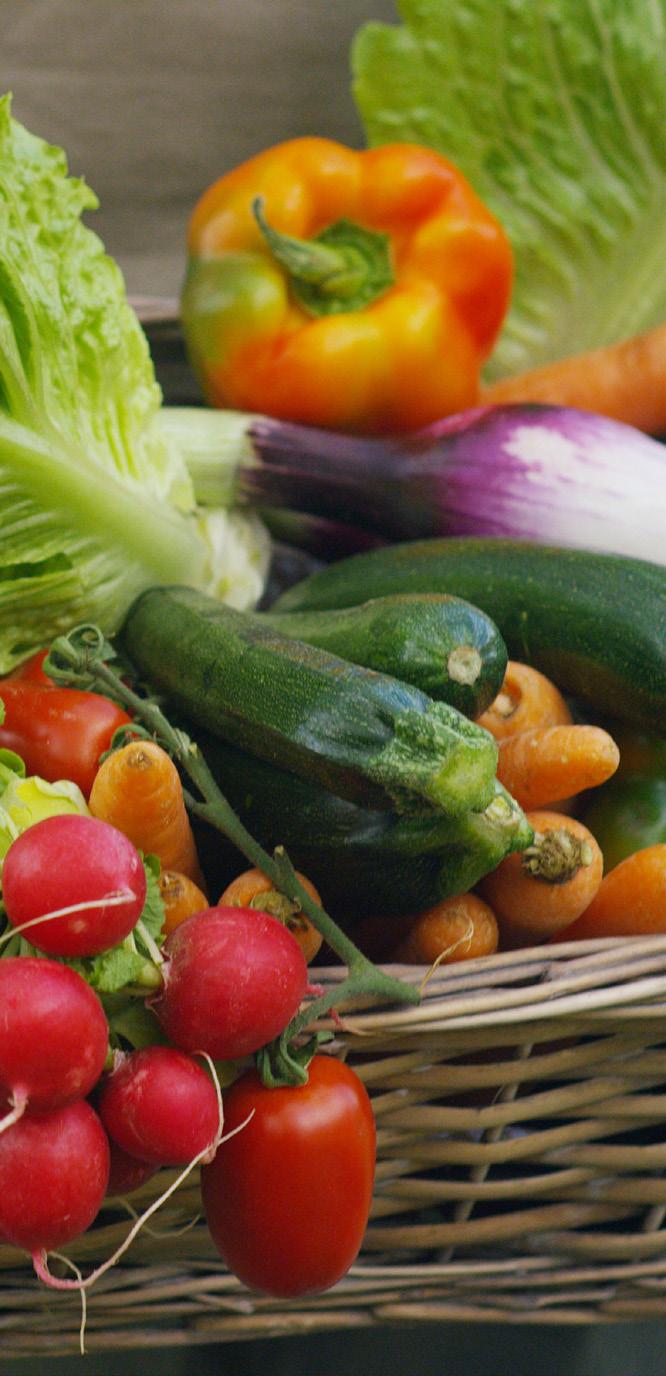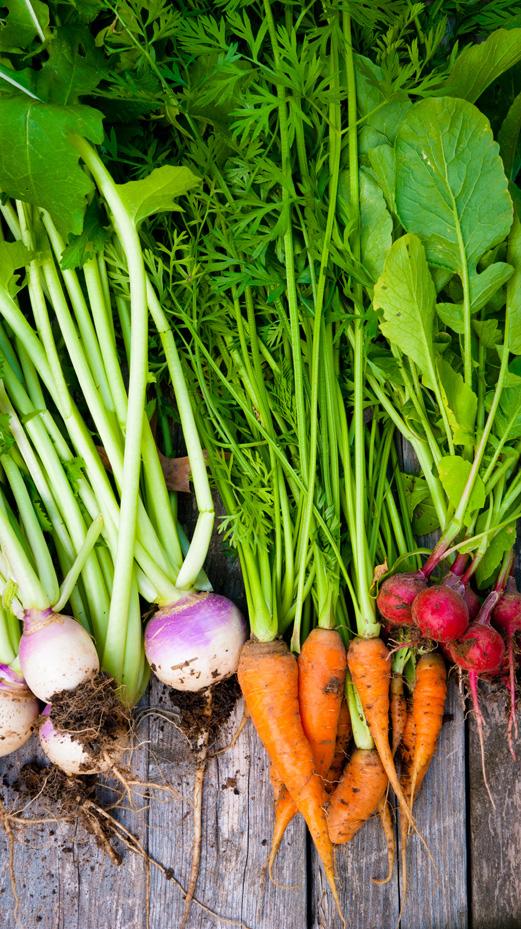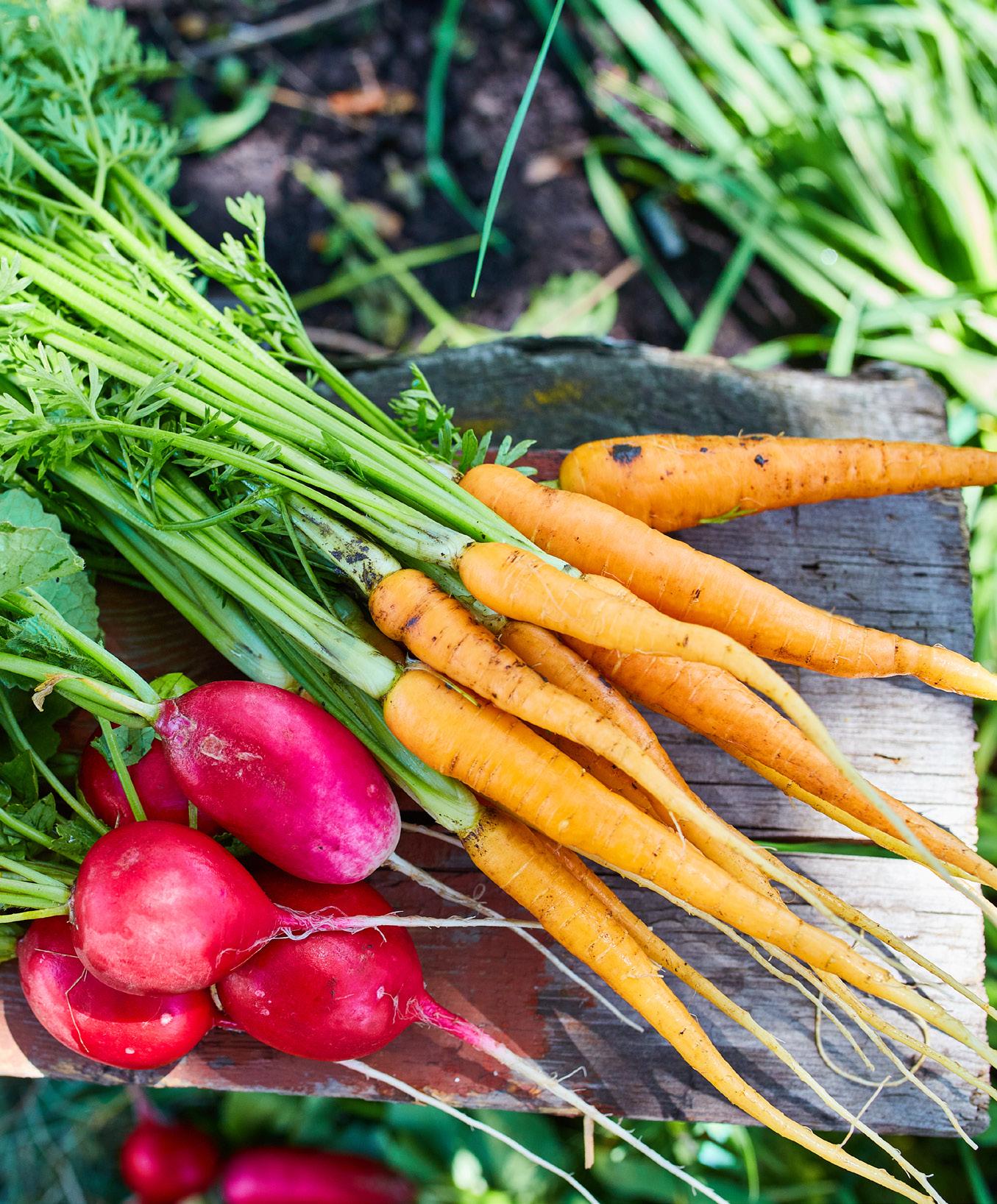
5 minute read
Creating your very own dream vegetable garden.
Dream CREATING A VEGETABLE GARDEN

Whether or not you are a gardener, thoughts of a dream vegetable garden may have entered your mind, the space in which you would grow your own organic produce. How would it be designed and what would you grow? You may be wondering if professionals struggle with the dilemma of whether to start with plants or design and how can the whole plot be managed. Well, the best place to start is at the beginning…
PLANNING THE SPACE
You’ll need to have a plan drawn up of your garden. It doesn’t have to be perfectly accurate and to-scale, but it must be good enough to give you a rough idea of how much room you have with which to plant. Do you have a large backyard that can handily contain a large garden or, will you be using a raised bed in a confined area?
You won’t need to plot out each area in terms of which plants are going where, but there’s load of information online about recommended sizes for different bed types. Also, have a look at the eventual height and spread of key plants you want to include to give you an idea how big each area needs to be. In addition, you will need to pay attention to sunlight in the space. Nearly all vegetables require loads of it.



Choose either row cropping or intensive cropping when you plan your vegetable garden’s layout. To row crop, place plants single file in rows at least 18 inches apart so that you can walk easily between them. This approach makes the most sense for large vegetable gardens. The downside is that space set aside for footpaths cuts down on the number of vegetables you can plant. To intensive crop, space two or three plants close together in a bed about 4 feet wide. Seeds are sown or transplants are placed so that their leaves will barely touch at maturity. This approach, which uses almost every square inch of the prepared soil, works well for most types of vegetables, excluding the ones that vine such as cucumbers.
CHOOSING THE PLANTS
Next, think about the type of vegetable gardens you like and will eat. If you have your heart set on a sunflower plant or you’d like an entire bed of green peppers, the key is to make a note of your essential plants now so that you don’t find these areas have been squeezed out of the picture later on. Also, consider the requirements of the plants you like. Vegetable plants need plenty of sun and can’t successfully be sited in a shady, tucked away part of the garden. The fastest-growing vegetables need full sun (at least six to eight hours of direct sunlight a day) without blockage from trees, shrubs, or fences. If your yard provides partial shade, plant vegetables and herbs that tolerate those conditions, such as lettuce, kale, chard, spinach, chives, cilantro, parsley and thyme. Root vegetables like carrots, radishes and beets might also work if your site gets at least four hours of direct sunlight a day. Or if you have a sunny patio, switch to container gardening. That way you can place sun-loving vegetables and herbs such as tomatoes, cucumbers, beans, basil, dill and rosemary, where they will do well.
CONVENIENT WATER ACCESS
The closer you can site your plot to a water source, the better. You will need to be able to water frequently during the first few weeks after seeds germinate or seedlings are transplanted to help these fragile plants produce strong roots and stems. Once your plants are established, it’s better to give your garden a long drink every few days rather than

a little sprinkle every day. Then the water will move deeper into the soil, which encourages roots to grow deeper, where they’re better able to access the nutrients they need to stay healthy. Consider installing soaker houses or drip irrigation on a timer to help minimize water waste and the time you need to spend watering.
START PLANTS IN RICH SOIL
For the best harvest, your vegetable garden needs the best soil you can give it. Rich, healthy soil is something you know when you feel it – it’s easy to dig and drains well. Pick up a trowel’s worth and put it in your hands. Does it feel gritty? Too much sand. Is it powdery? Too much silt. Is it sticky when wet? Too much clay. The combination of these three types, and in which specific proportions, determines the texture of your garden soil. That texture affects drainage and the availability of nutrients. You want soil that is dark, crumbly, and literally full of life. Fortunately, no matter what the texture may be, all soil can be improved over time by incorporating organic matter into it.
To prepare your soil for planting, spread any needed amendments like compost and work them into the soil with a tiller or spade. Avoid stepping on freshly tilled soil or you’ll compact it and undo all your hard work. Then rake the surface smooth and water thoroughly. Allow the bed to rest several days before you plant so the soil amendments can do their work.
STOP WEEDS
Weeds compete with your vegetables for light, water and nutrients, so it’s important to keep them to a minimum. A mulch of clean straw, compost, or plastic can keep weeds at bay around larger plants like tomatoes. Use a hoe to discourage any weed seedlings that do pop up.
Once you have designed and planted your garden, it is wonderful to watch it grow. Before you know it, fresh and organic homegrown vegetables will be the highlight of your dishes.











